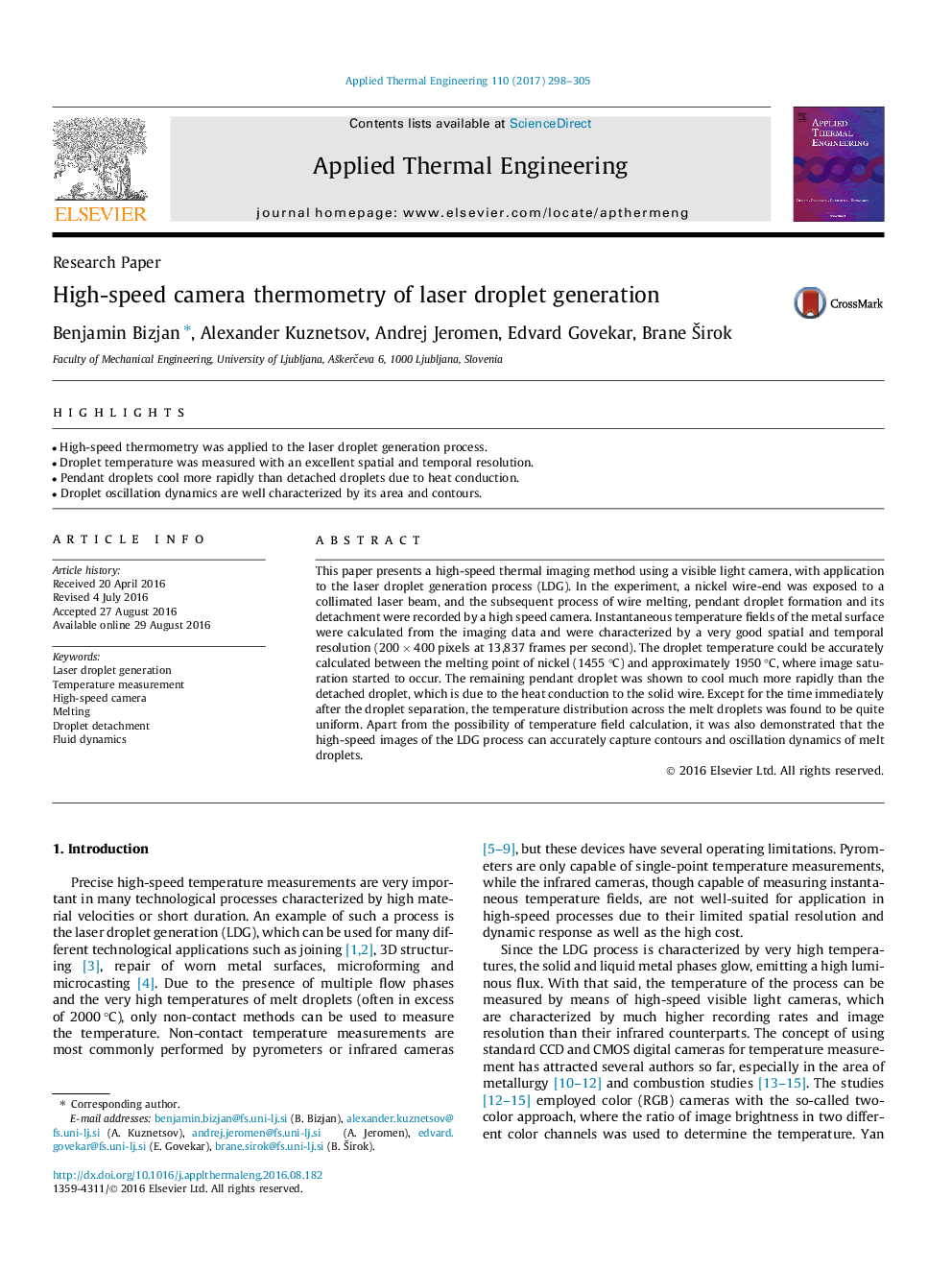| Article ID | Journal | Published Year | Pages | File Type |
|---|---|---|---|---|
| 4992017 | Applied Thermal Engineering | 2017 | 8 Pages |
Abstract
This paper presents a high-speed thermal imaging method using a visible light camera, with application to the laser droplet generation process (LDG). In the experiment, a nickel wire-end was exposed to a collimated laser beam, and the subsequent process of wire melting, pendant droplet formation and its detachment were recorded by a high speed camera. Instantaneous temperature fields of the metal surface were calculated from the imaging data and were characterized by a very good spatial and temporal resolution (200 Ã 400 pixels at 13,837 frames per second). The droplet temperature could be accurately calculated between the melting point of nickel (1455 °C) and approximately 1950 °C, where image saturation started to occur. The remaining pendant droplet was shown to cool much more rapidly than the detached droplet, which is due to the heat conduction to the solid wire. Except for the time immediately after the droplet separation, the temperature distribution across the melt droplets was found to be quite uniform. Apart from the possibility of temperature field calculation, it was also demonstrated that the high-speed images of the LDG process can accurately capture contours and oscillation dynamics of melt droplets.
Related Topics
Physical Sciences and Engineering
Chemical Engineering
Fluid Flow and Transfer Processes
Authors
Benjamin Bizjan, Alexander Kuznetsov, Andrej Jeromen, Edvard Govekar, Brane Å irok,
